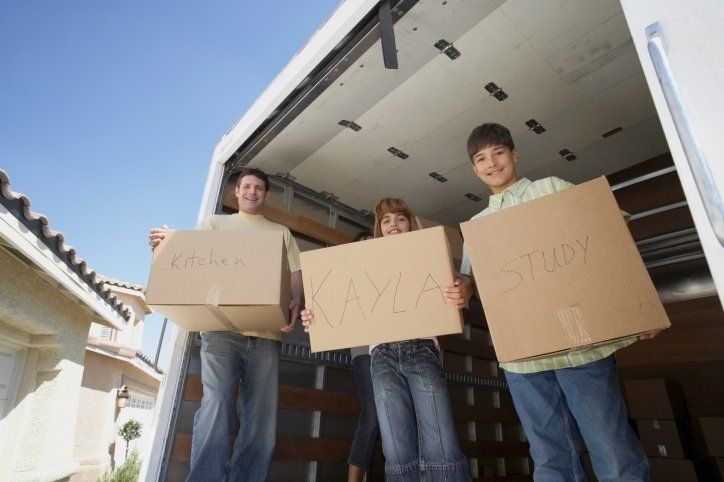Myrtle Beach Opening for Business!
Dusty Rhodes • June 8, 2020
Things are finally starting to look up on the Grand Strand!
We've been cooped up and doing take-out for what seems like forever. Our favorite spots to hang out and unwind have been closed. But it's all been for a good cause - the greater good, the health of our neighbors, our friends, and our families. But let's be honest. We can't wait to get out and do the things we love, and some folks can't wait to go back to work and start making money to pay the bills. So, in honor of being OPEN for BUSINESS, here's a quick list of some of the great places you can check out and enjoy again!
SkyWheel Myrtle Beach, Ripley’s Aquarium, WonderWorks, and Family Kingdom and other amusement venues are open in Myrtle Beach.
Topgolf is open TODAY, June 8th.
The Myrtle Beach area is nearly fully open and ready for the summer tourism season as restrictions put in place by state and local governments to combat the spread of the coronavirus COVID-19 have largely been rescinded.
Topgolf Myrtle Beach director of operations Jeff Kowalski said he has been told by the corporate office to prepare the facility to reopen with sanitation and safety measures in place. Plastic barriers are being placed between each of the facilities’ 72 indoor-outdoor hitting bays and seating has been decreased in common areas, so Kowalski expects to be able to open at full capacity and still achieve social distancing between groups.
The Family Kingdom Amusement Park reopened last Monday and will maintain hours of 6-11 p.m. through Sunday.
General manager Donald Sipes said the park is adhering to government recommendations regarding coronavirus safety and cleaning procedures and will evaluate hours moving forward.
“We’re just taking it a week at a time to see how the crowds and everything is going,” Sipes said. “We hope to have a good week and we’ll kind of see what happens.”
The affiliated Splashes Oceanfront Water Park remains closed this week.
Most of the Broadway at the Beach entertainment and shopping complex is open and more will open there this week.
Ripley’s Aquarium, which currently features a penguin parade, reopened Memorial Day weekend at Broadway and has limited hours of 9 a.m. to 4 p.m. Some elements of the aquarium such as glass bottom boats, touch tanks and interactives are inoperable for safety reasons.
WonderWorks reopened last Tuesday and is open daily from 10:30 a.m. to 9 p.m. with about 100 hands-on exhibits open. Only the laser tag arena and ropes course are closed. The affiliated Soar + Explore zipline that traverses Lake Broadway opens daily at noon.
The Crocodile Rocks dueling piano bar reopens at 7 p.m. Thursday with social distancing measures in place.
Bar-restaurants Hard Rock Café and Bar Louie are open, and Senor Frogs has been open for lunch and dinner since Cinco de Mayo, but it hasn’t been open as a post-dinner nightclub.
S.C. Gov. Henry McMaster has not allowed night clubs, concert venues and adult entertainment clubs to reopen yet.
Broadway includes the nightclubs Oz and Malibu’s Surf Bar operated by Celebrations Nightlife. Company general manager Joey Monteleone said there have been rumors of a lifting of the closure on clubs by June 15 and he spoke to the governor’s office and was told McMaster is reviewing the recommended guidelines for clubs from the accelerateSC committee and the office hopes to soon make an announcement.
SkyWheel Myrtle Beach and National Amusement Rides’ three locations in Myrtle Beach – Free Fall Thrill Park featuring the Sling Shot on Ocean Boulevard on 12th Ave North, and both Action Park and Fun Park at Broadway at the Beach – opened on or before Memorial Day Weekend.
“We’re open, we’ve got our fingers crossed and we hope the next 90 days will be good,” said SkyWheel partner and National Amusement Rides owner Bill Prescott.
Ripley’s Haunted Adventure and Ripley’s Moving Theater on Ocean Boulevard remain closed for the time being, and no reopening date has been established according to a company customer service representative.
Wild Water & Wheels in Surfside Beach opened on Saturday and Myrtle Waves in Myrtle Beach opened on May 23. If you purchased a season pass for one park by Saturday the pass is good for both parks all summer.
Shark Wake Park in North Myrtle Beach opened Saturday and will be open from noon to 7 p.m. through Sunday, then will open at 10 a.m. next week.
Rockin’ Jump Trampoline Park reopened on May 25, the Hollywood Wax Museum is open 10 a.m. to 8 p.m. daily, and the Fun Warehouse indoor amusement center featuring go karts, roller skating and laser tag has been open since May 22.
The Comedy Cabana and Asher Theater, which is holding The Very Best of Sam Cooke and Ray Charles on June 19-20, are open and again booking acts.
The Ripken Experience Myrtle Beach baseball and softball park with nine fields is set to reopen on June 14. Ripken park senior general manager Bobby Holland said about 400 teams from around the country are expected for eight weeks of baseball tournaments.
“There have been some [cancellations] but nothing extensive. I think people are excited to play baseball,” said Holland, whose park will announce next week the safety and sanitary protocols that are being instituted.
The Myrtle Beach Convention Center is open for business but because of cancellations the next scheduled event isn’t until the Showstoppers National Dance Competition from June 29-July 5.
Event producers or managers are responsible for following coronavirus health guidelines, and convention center officials have added space to help the Showstopper organizers promote social distancing.
The Myrtle Beach Sports Center is also open and the next event is the National Travel Basketball Association Girls National Championship from June 24-28.
The Myrtle Beach boardwalk has been open and the Murrells Inlet Marsh Walk reopened on May 13.
Dusty Rhodes Properties is the Best Realtor in Myrtle Beach! We do everything in our power to help you find the home of your dreams. With experience, expertise, and passion, we are the perfect partner for you in Myrtle Beach, South Carolina. We love what we do and it shows. With more than 22 years of experience in the field, we know our industry like the back of our hands. There’s no challenge too big or too small, and we dedicate our utmost energy to every project we take on. We search thousands of the active and new listings from Aynor, Carolina Forest, Conway, Garden City Beach, Longs, Loris, Murrells Inlet, Myrtle Beach, North Myrtle Beach, Pawleys Island, and Surfside Beach real estate listings to find the hottest deals just for you!
Share

If there was one simple step that could help make your home sale a seamless process, wouldn’t you want to know about it? There’s a lot that happens from the time your house goes under contract to closing day. And a few things still have to go right for the deal to go through. But here’s what a lot of sellers may not know. There’s one part of the process where some homeowners are hitting a road bump that’s causing buyers to back out these days. But don’t worry. The majority of these snags are completely avoidable, especially when you understand what’s causing them and how to be proactive. That’s where a great agent (and a little prep) can make all the difference. What’s Causing Some Buyers To Back Out The latest data from Redfin says 15% of pending home sales are falling through . And that’s not wildly higher than the 12% norm from 2017-2019. But it is an increase. That means roughly 1 in 7 deals today don’t make it to the closing table. But, at the same time, 6 out of 7 do. So, the majority of sellers never face this problem – and odds are, you won’t either. But you can help make it even less likely if you know how to get ahead. You might assume the main reason buyers are backing out today is financing. But that’s actually not the case. The most common deal breaker today, by far, is inspection and repair issues (see graph below):

You’ve got big plans for 2026. But what you do this year could be the difference between a smooth sale and a stressful one. If you’re thinking of selling next spring (the busiest season in real estate), the smartest move you can make is to start prepping now. As Realtor.com says : “If you’re aiming to sell in 2026, now is the time to start preparing , especially if you want to maximize the spring market’s higher buyer activity.” Because the reality is, from small repairs to touch-ups and decluttering, the earlier you start, the easier it’ll be when you’re ready to list . And, the better your house will look when it’s time for it to hit the market. Why Starting Now Matters Talk to any good agent and they’ll tell you that you can’t afford to skip repairs in today’s market. There are more homes for sale right now than there have been in years. And since buyers have more to choose from, your house is going to need to look its best to stand out and get the attention it deserves. Now, that doesn’t mean you have to do a full-on renovation. But it does mean you’ll want to tackle some projects before you sell. Your house will sell if it’s prepped right. And you don’t want to be left scrambling in the spring to get the work done. Because here’s the advantage you have now. If you start this year, you’ll be able to space those upgrades and fixes out however you want to. More time. Less stress. No sense of being rushed or racing the clock. Whether it’s fixing that leaky faucet, repainting your front door, or finally replacing your roof, you can do it right if you start now. And you have the time to find great contractors without blowing your budget or paying extra for rushed jobs. Get an Agent’s Advice Early To figure out what’s worth doing and what’s not in your market, you need to talk to a local agent early. That way you’re not wasting your time or money on something that won’t help your bottom line. As Realtor.com explains : “Respondents overwhelmingly agree that both buyers and sellers enjoy a smoother, more successful experience when they start early. In fact, a recent survey reveals that, for sellers, bringing a real estate agent into the process sooner can pay off significantly. ” A skilled agent can tell you: What buyers in your local area are looking for The repairs or updates you need to do before you list How to prioritize the projects, if you can’t do them all Skilled local contractors who can help you get the work done And having that information up front is a game changer. To give you a rough idea of what may come up in that conversation, here are the most common updates agents are recommending today, according to research from the National Association of Realtors (NAR):

From the first coat of paint you used to freshen up your house’s trim to the stress of wrangling your way to a deal, you’ve been through a lot in that place. Now you’ve made it to the final hurdle of selling a home: moving out! Don’t worry, this is the easy part… but you want to do it right. Here’s how to get through the last leg of your journey without any bumps along the way. How to move out on time Once the paperwork is signed at closing, the buyers will officially own the house—and you won’t. That means that, technically, if you or your stuff is still there after the close, “the buyer could evict you,” says Joshua Jarvis , founder of Jarvis Team Realty in Duluth, GA. So make sure to have your exit strategy in place! Still, most buyers will understand if you need a bit more time and have a legitimate reason—like if you can’t move until the weekend due to your work schedule. Just be sure to discuss these issues as soon as possible before the close, so your buyers can plan accordingly. Decide what to leave behind To make sure you’re leaving behind everything the buyer wanted—and that you agreed to—double-check the closing documents . There should be an itemized list of what comes with the house . And even if the buyers didn’t formally request them, it’s just good form to leave certain types of things behind. Such as? “Generally speaking, you should leave anything that’s bolted to the wall,” says Jarvis. “Some homeowners want to take their fans and blinds to the next home, but generally if it’s screwed in, it stays.” Also, if you and the buyers agreed to transfer any services—such as alarm monitoring or pest control —be sure to set that up before you go. Leave the buyers a detailed note in the house, or ask your agent to get in touch with theirs to make sure the transfer goes smoothly. If you do inadvertently take an item that the buyers had requested, they have the right to ask for it back—and they could potentially sue you in civil court for the cost of a replacement. So, when in doubt, feel free to check with the buyers before you grab and go. But don’t leave anything else behind Just as important as what you leave behind is what you don’t. Your buyers have a right to move into a home that’s been cleared of furniture and other movable items they didn’t expressly request. “Some folks leave all kinds of unwanted clothes, furniture, paint cans, and other items, thinking they are helping the buyers,” Jarvis says. If you truly think your buyers might love to have your old planting pots or kiddie equipment, go ahead and ask—but please don’t assume they’ll welcome your leftovers. Even if you’re careful, you might forget something—at which point the buyers may contact their agent to get it back to you, but they also have the legal right to just keep or get rid of it. So double-check areas (e.g., the attic, garage, basement, storage shed, kitchen, and bathroom drawers) where people commonly overlook items. Clean up It’s common courtesy to leave the place not only clear of your possessions but also clean. However, that doesn’t mean you have to leave it immaculate. “Generally, you shouldn’t have to pay to have it deep cleaned,” Jarvis says. In most cases, a simple broom-clean will do. That means wiping down the countertops, cleaning out drawers, sweeping or vacuuming all the floors, and giving the bathroom and kitchen appliances a once-over so the new owners aren’t grossed out when they arrive. Are you forgetting anything? Before you close the door for the last time, run through a quick checklist. Did you eyeball every room for stray items? Have you forwarded your mail and turned off the utilities? Is the water running in the jacuzzi? We all get in a bit of a rush even in the best planned moves, but you won’t be able to get back in, so it can’t hurt to do a final run-through before you move out. Once you’re ready, it’s time to leave. You can drop a line to your real estate agent to let them know you’re out, although it’s usually a courtesy more than a necessity. If you’re feeling truly gracious, feel free to leave a note, card, or bottle of bubbly congratulating the people who’ve inherited your former home. Given all the fond memories you’ve built between those walls, wouldn’t it be nice to start the home’s new owners off on the right foot? And buy yourself some Champagne, too. Make it the good stuff—you’ve earned it.


